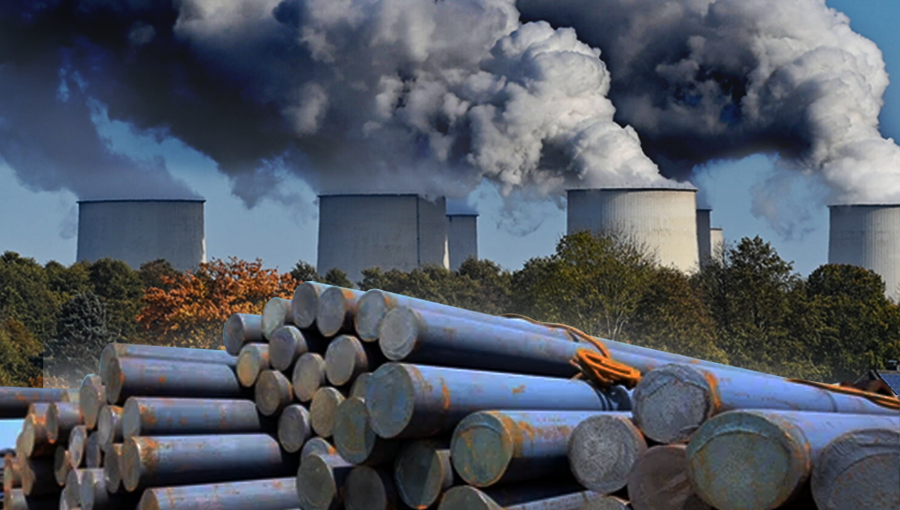India–US Trade Tensions Rise Over Steel and Auto Tariffs NMDC Limited reports a 38% drop in Q4 FY24 consolidated net profit RINL to Raise $23 Million Through Land Sales Amid Crisis

Beijing has vowed to reduce emissions from four carbon-intensive industries - steel, oil refining, ammonia, and cement - by 84 million tonnes (MT) by the end of next year as it targets its national industrial system, which accounts for about half of total carbon emissions.
According to China's National Development and Reform Commission (NDRC), energy conservation and carbon reduction in the steel, oil refining, synthetic ammonia, and cement industries will be crucial to peaking carbon emissions, achieving carbon neutrality, and accelerating a green transition. China is the largest emitter in the world, accounting for one-third of all carbon emissions worldwide.
“Actively promoting energy conservation and carbon reduction in related industries, controlling the access of new projects, implementing energy conservation and carbon reduction transformation of existing projects, promoting the renewal of energy-consuming equipment and optimising the energy consumption structure, can effectively improve energy use efficiency and reduce carbon dioxide emissions,” the NDRC said in a statement on Friday.
“This is of great significance in supporting energy conservation and carbon reduction in the whole society.”
The steel industry accounts for 15-20% of China's total emissions, with cement accounting for 10% and ammonia accounting for 1.5%. While the International Energy Agency reported that China's carbon emissions increased by 4.7%, or 565 MT, to 12.6 billion tonnes last year due to increased energy consumption, despite industrial emissions staying stable, analysts believe that the efficiency benefit will be felt in the medium term.
“We find that a combination of energy efficiency measures, electrification of end-use energy consumption, and low-carbon electricity supply based on a variety of renewable energy sources, such as solar and wind, could significantly help the country achieve its decarbonisation goals by 2055,” climate website Carbon Brief said earlier this month.
The NDRC and other government ministries have set goals for improving the energy efficiency of China's four carbon-intensive industries by the end of 2025, in keeping with President Xi Jinping's commitment to reach peak carbon emissions by 2030 and become carbon neutral by 2060.
The blueprint proposes a reduction in energy consumption per tonne of steel produced by more than 2% in 2025 compared with 2023. This will be achieved by a targeted cut in the energy consumption of blast furnace and converter processes by more than 1% and by electric arc furnace smelting by over 2%. At the same time, power generation from residual heat, pressure and energy in the steel industry will be increased by more than 3% points compared with 2023, according to the NDRC document.
Energy utilisation will be made more efficient in the oil refining and synthetic ammonia industries, while the comprehensive energy consumption ratio per unit of cement clinker will be reduced by 3.7% compared with 2020 levels.
NDRC said the implementation of energy-saving and carbon-reduction transformation and the renewal of energy-consuming equipment in the four carbon-intensive industries is expected to save about 32 MT of standard coal equivalent by 2025, which translates into a reduction of 84 MT in carbon dioxide emissions.
Currently, around 15% of the production capacity of crude steel and oil refining in China has failed to meet the benchmark energy efficiency standards, while 11% of synthetic ammonia and 16% of cement-making capacity falls below that benchmark, according to the NDRC. This highlights the need for more significant energy conservation and carbon reduction in these industries.
By the end of 2030, China aims for the capacity road map of the four industries to be further optimised and for the industries’ energy use efficiency to reach advanced levels internationally.
Also Read : Arcelor Mittal to establish single largest steel site in Hazira: Laksmi Mittal India and seven other WTO members slam EU and UK over steel duty